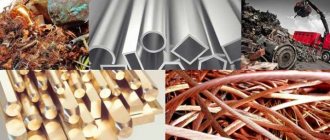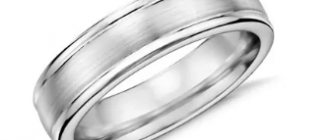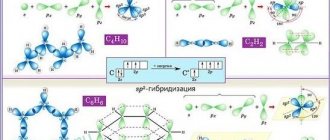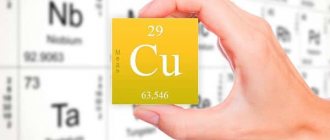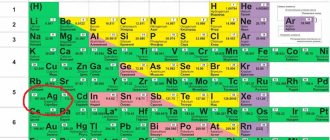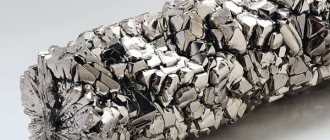From Macedonski to Sapkowski
In the troops of Alexander the Great, military leaders were sick less often than privates. But both the food and the conditions during the hikes were the same for everyone. The reason for good health (as medical historians suggest) is in the dishes. The rank and file ate from tin plates, while the military leaders were given silver plates.
Our Russian ruble is inextricably linked with silver. No, there is currently no precious metal in ruble and other consumable coins. But the coin got its name from the word “chopping.” In Ancient Rus', silver ingots or rods were in circulation; they were called hryvnias. A piece was cut off from them (corresponding to the price of the product), and it was called a ruble.
Mystical powers have always been attributed to the precious metal. Protection from any evil spirits (even vampires and werewolves, who could only be killed by silver weapons), from the evil eye and other horrors of the night.
Those who have read Sapkowski's books about the witcher Herald (or played computer games based on the book) know: the witcher's sword was made of pure silver metal. After all, the Rivan’s profession was the destruction of all kinds of evil spirits.
Usage and connections
About 10 percent of the silver produced in the United States is used in coins, jewelry and artwork. One way to use silver is to alloy it with gold. Gold is highly desirable for coins and jewelry. But it is too soft to use in its pure form.
However, adding silver to gold makes the alloy much stronger and more durable. Most “gold” objects today are actually alloys, often alloys of silver and gold.
However, other objects use much more silver metal. About half of the silver produced in the United States goes into photographic film. Pure silver is first converted into a compound: silver chloride, silver bromide, or silver iodide. This composition is then used to make photographic film (see accompanying sidebar).
The second most important use of silver is in electrical and electronic equipment. About 20 percent of all silver produced is used for this purpose. Silver is actually the most desirable of all metals for electrical equipment. Electricity flows through silver more easily than through any other metal. However, in most cases metals such as copper or aluminum are used because they are cheaper.
Chemistry and physics of noble metal
Silver has amazing properties.
It is the champion in electrical conductivity among metals. This metal has the highest thermal conductivity. The reflection of infrared and light waves by silver reaches 99%.
The density of lunar metal is 10.5 g/cm³. It is heavier than copper, but lighter than lead.
The hardness of silver is 2.5-3; it is a soft, malleable, ductile metal.
| Properties of the atom | |
| Name, symbol, number | Silver / Argentum (Ag), 47 |
| Atomic mass (molar mass) | 107.8682(2)[2] a. e.m. (g/mol) |
| Electronic configuration | [Kr] 4d10 5s1 |
| Atomic radius | 144 pm |
| Chemical properties | |
| Covalent radius | 134 pm |
| Ion radius | (+2e) 89 (+1e) 126 pm |
| Electronegativity | 1.93 (Pauling scale) |
| Electrode potential | +0,799 |
| Oxidation states | 2, 1 |
| Ionization energy | 1st: 730.5 kJ/mol (eV) 2nd: 2070 kJ/mol (eV) 3rd: 3361 kJ/mol (eV) |
| Thermodynamic properties of a simple substance | |
| Density (at normal conditions) | 10.5 g/cm³ |
| Melting temperature | 1235.1 K; 962 °C |
| Boiling temperature | 2485 K; 2162°C |
| Ud. heat of fusion | 11.95 kJ/mol |
| Ud. heat of vaporization | 254.1 kJ/mol |
| Molar heat capacity | 25.36[3] J/(K mol) |
| Molar volume | 10.3 cm³/mol |
| Crystal lattice of a simple substance | |
| Lattice structure | cubic face-centered |
| Lattice parameters | 4.086 Å |
| Debye temperature | 225 K |
| Other characteristics | |
| Thermal conductivity | (300 K) 429 W/(mK) |
| CAS number | 7440-22-4 |
Description and properties
Ag is one of the elements that make up our planet, along with iron, tin, silicon and many different substances. Usually it plays second fiddle in a duet with another precious metal - gold, but the main properties of silver deserve no less attention. For example, it is the best conductor of heat and electricity among metals, as well as a reflector of visible light, therefore, before the invention of the technology for producing mirrors from glass and amalgam, ladies looked into mirrors made of polished silver.
Pure silver is too soft for items such as jewelry and tableware. Forks, knives, bracelets and candelabra passed down through inheritance are most likely made from an alloy with copper in a ratio of 92.5 to 7.5% (other metals are sometimes used). Characteristics of silver according to Jefferson Lab:
- atomic number (number of protons in the nucleus): 47;
- symbol: Ag;
- atomic weight (average atomic mass): 107.8682;
- density: 10.501 grams per cubic centimeter;
- phase of the substance at room temperature: solid;
- melting point: 961.78 C;
- boiling point: 2162 C;
- number of isotopes (atoms of the same element with different numbers of neutrons): 66; 2 are stable;
- the most common isotopes: Ag-107 (51.839% of the content in nature) and Ag-109 (48.161% of the content in nature).
Since special attention is paid to the purity of precious metals, you can find out what the silver of a particular product is made of by looking at its brand.
This parameter indicates the chemical composition of the metal and the percentage of various impurities. It is subject to state requirements for standard and quality (GOST).
Loot: we take it where we find it
Gold and silver are found in the form of nuggets. Therefore, both metals have been used by people since ancient times, and silver was often valued more than gold.
We recommend: FERROUS METALS - the soul and body of modern industry
In the 15th century, on the border between Saxony and Bohemia, a block of pure native silver weighing 20 tons was discovered.
The Canadian nugget was almost 30 meters long and weighed about 20 tons. Because of its shape, it was called the “silver sidewalk.”
But such cases are rare; Silver in its native state is less common than gold.
Most often, silver ores occur in the form of veins and mineralized zones in volcanic belts.
Lunar metal can be mined in:
- Peru;
- Mexico;
- Chile;
- Germany;
- USA;
- China;
- Russia.
- Australia.
Many countries do not advertise statistics on the production of the precious metal. But what is certain is that the demand for it is increasing, and we should expect an increase in its production in the world.
Only a quarter of silver is mined directly from silver deposits. The rest of the metal is obtained as a by-product from the mining of gold, copper, and lead.
More than 50 natural silver minerals are known, of which only 15–20 are of industrial importance:
- native silver;
- electrum (gold-silver);
- kustelite (silver-gold);
- argentite (silver-sulfur);
- proustite (silver-arsenic-sulfur);
- bromargerite (silver-bromine);
- kerargyrite (silver-chlorine);
- pyrargyrite (silver-antimony-sulfur);
- stephanite (silver-antimony-sulfur);
- polybasite (silver-copper-antimony-sulfur);
- freibergite (copper-sulfur-silver);
- argentoyarosite (silver-iron-sulfur);
- dyscrazite (silver-antimony);
- aguilarite (silver-selenium-sulfur).
Silver
Silver, like gold, occurs in nature in the form of nuggets and has good malleability. Thanks to these properties, it has played a vital role in the cultural, economic and even religious life of society since ancient times.
The age of the first silver items found in the Middle East is more than 6 thousand years. This metal was a symbol of the moon for the inhabitants of Babylon and Assyria. The material for the world's first coins was an alloy of the two most popular precious metals today - silver and gold. And in the Middle Ages, “argentum” (Latin) and its compounds excited the minds of alchemists.
Today, this metal opens up endless possibilities for the imagination of jewelers who create unique jewelry.
Silver in nature
Appearing before the admiring gaze of man in its native form, silver reached truly enormous sizes. Thus, the German Schneeberg deposit (Ore Mountains) gave the world a silver nugget weighing 20 tons back in 1477. Perhaps, in the entire history of the development of this noble metal, only Canadians managed to break the record, who already in the twentieth century found a nugget in the province of Ontario, called the “silver pavement.” The giant, which was 30 m long and 18 m deep into the ground, also yielded 20 tons when melted - but this time it was pure silver.
Unfortunately, greater chemical activity than gold allows a person to encounter silver more often in the form of various compounds. It is concentrated in more than 50 known minerals containing selenium, sulfur, tellurium or halogens. And 75% of currently known silver reserves come from complex silver-bearing deposits, where silver is only an associated component in other ores.
Today, silver reserves in the world are estimated at 570,000 tons. The undisputed leader in the production of this metal is Peru, followed closely by Mexico, China, Chile and Australia.
Properties of “lunar metal”
Silver in its pure form is a silvery-white metal that has the highest thermal and (at room temperature) electrical conductivity among all known metals. This metal is relatively refractory (melts at 962 °C), but is incredibly ductile. The thinnest wire 2 km long can be obtained from just 1 g of silver. An important criterion for silver is its property of not oxidizing under the influence of oxygen, which allows it to be classified as a noble metal. However, exposure to iodine and hydrogen sulfide in a humid environment leads to darkening of silver items or the formation of a “rainbow” sulfide film on their surface.
Silver lends itself perfectly to processing: polishing, cutting, twisting, drawing and rolling into the thinnest plates. These properties make it indispensable for the manufacture of jewelry masterpieces, but at the same time they limit the shelf life of soft and delicate products made of pure metal. Therefore, in jewelry, to achieve strength, silver is used in the form of an alloy with the addition of copper.
Sterling silver
The most reliable, immaculately white and durable material for making jewelry is 925 silver, also called sterling. This pure silver with a small amount of copper has long been considered ideal for making tableware and most jewelry. Despite all attempts to improve the characteristics of this alloy with the help of zinc, silicon, germanium and even platinum, 925 silver does not give up its leadership position.
New century - new style
The unique style of 925 silver is given by special processing methods. For example, a thin coating of precious white rhodium creates a brilliant brilliance not typical of pure silver. Rhodium plated silver not only looks attractive, but is also particularly resistant to corrosion and mechanical damage. The platinum shine of rhodium and its durability were appreciated by fashion trendsetters such as Gucci, Tiffany and Christian Dior, choosing it to cover their silver products.
Also, a thin layer of oxidized silver gives special decorative and protective properties to 925 silver jewelry. Having undergone a special treatment with sulfur, silver acquires a special charm and “aged”, vintage charm. Thanks to special polishing, the convex parts of the product retain their natural silver color, standing out in relief against the darker concave elements.
Another way to give silver an original color is the age-old secret of blackening silver that never goes out of style. Having a certain external resemblance to oxidized metal, blackened silver is the result of a very special art. During the processing of the product, a coating of silver, lead and copper sulfide (niello) is fused at high temperatures with the engraved surface of the silver, creating exquisite patterns.
And products made from so-called matte silver, on the surface of which microroughness appears due to the use of a special emulsion, have a special nobility and sophistication.
When talking about silver processing, one cannot fail to mention gilding. Gilding (gold plating) is the electroplating of silver with a layer of gold ranging in thickness from fractions to tens of microns. This coating has great chemical resistance, that is, it is a good means of protecting metal from corrosion. Electroplating increases surface hardness and improves aesthetic appearance, giving jewelry a noble and expensive look. Gold plating also imparts greater thermal and electrical conductivity, which is used in watchmaking and fine electronics.
Silver in jewelry fashion
Due to its availability, silver is one of the most popular materials for making jewelry today. It is also valued by jewelers as well as metal for making decorative items that create a sophisticated aristocratic atmosphere in the house.
Silver jewelry surprises its lovers with a variety of decorative solutions and design finds. Elegant and laconic classic models in jewelry store windows coexist with bright, voluminous jewelry inspired by leading fashion trends. The versatility of silver is also manifested in its “friendship” with a variety of inserts. In its frame, both colorless cubic zirconia and colored semi-precious stones look equally good. Silver reveals the full play of light on the edges of the inserts.
One of the popular techniques for decorating jewelry made from this precious metal is jewelry enamel. With its help, a variety of jewelry is created that have their own individuality - after all, each product is painted exclusively by hand by an experienced craftsman. They bear the imprint of the soul of enamellers who put all their creativity into jewelry.
Being a universal material, silver is suitable for men and women of any age and social status. It is combined with gold, enamel, any semi-precious and precious stones, pearls and enamel, corals and ivory. Silver jewelry is suitable for any occasion and among the variety of silver jewelry, you can choose something suitable for a variety of occasions. In addition, according to ancient beliefs, silver calms and heals, so in the crazy age of speed, you shouldn’t deny yourself a little silver joy.
Application
Noble metal works for the needs of people. In the production of electrical and electronic products, in solders for critical products, in the jewelry industry.
Silver iodide is used to disperse clouds (and you wonder why the weather is always good in the capital during the holidays...).
Used to disinfect water, but on a large scale it is not economically viable.
For high quality mirrors, silver is used (simple mirrors use aluminum). Mirrors with precious metal are used to supply solar energy to desalination plants in Saudi Arabia (they have a lot of money, but fresh water is tight).
Food additive E174 is silver; used in the preparation of desserts and culinary products (expensive, it must be said, products). If you are a fan of “silver food delights,” do not forget: the permissible daily dose of metal is no more than 7 milligrams per day.
This is a small list of places where you cannot do without precious metal.
Types of silver
Unlike gold, which today comes not only in red (with a reddish tint), but also in white, yellow (lemon), green and even black, the color of silver remains unchanged. This does not prevent the metal from being different.
Sterling silver
Considered the standard. Contains 92.5% pure metal with an admixture of 7.5% copper. This proportion allows you to increase the strength of the product and preserve the natural silver tint.
Matte silver
The effect of lack of shine is achieved by heating the alloy in hydrochloric or sulfuric acid. Jewelry with a noble matte surface looks expensive and stylish.
Filigree silver
Filigree silver has 960 standard. In jewelry it is used to create the finest woven patterns. One gram of silver can be stretched into a wire two kilometers long.
Rhodium plated silver
One of the most expensive types of silver, since rhodium belongs to the platinum group metals. Its thin layer increases wear resistance, improves aesthetics, and protects against oxidation.
Blackened silver
This type of silver was invented in the 17th century in Russia. Blackening is performed by filling the recesses of a three-dimensional ornament with an alloy of copper, silver and lead sulfides. Gives products an aged, vintage look.
Oxidized silver
A type of blackened metal. Darkening the necessary areas, giving them gray, purple, black, blue shades is done using a film consisting of silver oxide.
Gilt silver
Visually, it is no different from gold, but costs less. To prevent the precious yellow layer from being erased, such products should be used carefully: avoid contact with water and household chemicals, and do not subject them to aggressive mechanical cleaning or friction.
Each of these species is beautiful in its own way. Another big plus is that silver is so versatile that it can be combined with both precious and semi-precious stones, which cannot be said about gold.
We heal with lunar metal
People have known about the anti-inflammatory properties of silver for a long time. In America, Indians disinfected water with pieces of hot metal. And the white settlers of the New World put a silver coin in a pot of milk to prevent it from turning sour.
Silver coins
Interesting: in Russia, for this purpose, they took a frog from the nearest pond. And for good reason - research by chemists from Moscow State University has proven that amphibians secrete antimicrobial and antifungal substances into their skin.
Modern silver preparations (collargol, protargol) relieve:
- erysipelas;
- purulent conjunctivitis;
- rhinitis;
- purulent wounds.
The healing properties of the noble metal include the antiseptic and healing properties.
Caution: prolonged use of drugs with silver threatens argyrosis. With this disease, the skin and mucous membranes take on a silvery or bluish-gray color. Colloidal silver taken long-term and in large doses can cause pulmonary edema, bone marrow dysfunction, and even coma. We recommend: RHENIUM - the last of the stable isotopes
Silver, like its patroness the Moon, favors women. Therefore, jewelry made from lunar metal will be useful for women during PMS who are prone to hysteria and inappropriate behavior.
Water has long been infused with silver and drunk. This water is useful for gastrointestinal diseases and throat diseases. Problems with the cardiovascular system should be treated by a doctor, but wearing silver jewelry (as esotericists say) will be useful.
Silver is now again attracting the attention of doctors. Water infused with a noble metal, if taken constantly, strengthens the immune system and does not suppress the intestinal microflora (which is the sin of all antibiotics).
And the ability of the precious metal to heal wounds and cuts has been used by doctors for a long time.
Silver water has a beneficial effect on the skin. It’s not for nothing that cosmetic companies produce product lines with “white gold”.
Use of silver.
An ancient use of silver was in making mirrors (nowadays inexpensive mirrors are coated with aluminum). Silver is used to make electrodes for powerful zinc-silver batteries. Thus, the batteries of the sunken American submarine Thrasher contained three tons of silver. The high thermal conductivity and chemical inertness of silver are used in electrical engineering: electrical contacts are made from silver and its alloys, and wires in critical devices are coated with silver. Dentures are made from silver-palladium alloy (75% Ag).
Huge amounts of silver used to be used to make coins. Nowadays, mainly commemorative and commemorative coins are made from silver. The heaviest modern silver coin, issued in Russia in 1999, weighs 3000 grams and has a mintage of 150 pieces. It is dedicated to the 275th anniversary of the St. Petersburg Mint. With a high silver content, coins and other products are very stable in air. Low-grade silver often turns green. The green coating contains basic copper carbonate (CuOH)2CO3. It is formed under the influence of carbon dioxide, water vapor and oxygen.
A lot of silver is used to make jewelry and cutlery. On such products, as a rule, they put a test indicating the mass of pure silver in grams per 1000 g of alloy (modern test), or the number of gold threads in one pound of alloy (pre-revolutionary test). 1 pound contains 96 spools, therefore, for example, the old hallmark of 84 corresponds to the modern one (84/96)1000 = 875. Thus, since 1886, the hallmark of coins in denominations of 1 ruble, 50 and 25 kopecks was 86 2/5 (modern 900), and the sample size of 20-, 15-, 10- and 5-kopeck coins (they were minted since 1867) was 48 (500). Soviet rubles and fifty kopecks had a fineness of 900, and smaller ones - 500. Modern silver products can have a fineness of 960, 925 (the so-called “sterling” silver), 916, 875, 800 and 750.
To find out the silver content in an alloy (its sample), as well as to distinguish silver products from alloys similar to silver, different methods are used. The simplest is a reaction with the so-called assay acid for silver, which is a solution of 3 ml of concentrated sulfuric acid and 3 g of potassium dichromate in 32 ml of water. A drop of the solution is applied to the surface of the product in an inconspicuous place. Under the action of sulfuric acid in the presence of a strong oxidizing agent, copper and silver transform into sulfates CuSO4 and Ag2SO4, then silver sulfate quickly turns into an insoluble loose precipitate of red silver dichromate Ag2Cr2O7. It is especially visible on the surface if the drop is carefully washed off with water. The red deposit is easy to remove mechanically; in this case, a slightly noticeable light speck will remain on the surface.
This method does not give a positive result if the alloy contains less than 25% silver (i.e., the fineness is less than 250). Such silver-poor alloys are quite rare. In this case, silver can be detected by dropping nitric acid onto the surface, and then dropping a solution of table salt onto the same place. In the presence of silver, a milky cloudiness will appear in the alloy: the acid dissolves a small amount of the metal, and chloride ions together with silver ions give a white precipitate of insoluble chloride AgCl.
To more accurately determine the sample, jewelers use a touchstone - a black stone with a polished matte surface. The product is passed over the stone, and the remaining stroke is compared with the color of the strokes from standard alloys of a known standard.
Many decorative silver items are covered with beautiful niello. For blackening, the so-called liver of sulfur containing potassium polysulfide (mainly K2S4) is used. Under the influence of this reagent, a black film of Ag2S sulfide is formed on the surface of silver.
Silver compounds are often unstable to heat and light. The discovery of the photosensitivity of silver salts led to the advent of photography and a rapid increase in the demand for silver. Back in the mid-20s, about 10,000 tons of silver were mined annually around the world, and much more was spent (the deficit was covered by old reserves). Moreover, almost half of all silver was used for the production of film and photographic materials. Thus, ordinary black and white photographic film contains (before development) up to 5 g/m2 of silver. The displacement of black and white photographs and films by color has significantly reduced silver consumption.
Silver is also used in the chemical industry for the manufacture of catalysts for certain processes, and in the food industry non-corrosive devices are made from silver. Silver iodide has interesting, although limited, uses; it is used for local weather control by spraying from aircraft. In the presence of even minute amounts of AgI, large water droplets are formed in the clouds, which fall as rain. Even the smallest particles of silver iodide with a size of only 0.01 microns can “work”. Theoretically, 1021 of these tiny particles can be obtained from a cubic crystal of AgI just 1 cm in size. As American meteorologists have calculated, only 50 kg of silver iodide is enough to “seed” the entire atmosphere above the surface of the United States (which is 9 million square kilometers!). Therefore, despite the relatively high cost of silver salts, the use of AgI to induce artificial rain turns out to be practically profitable.
Sometimes it is necessary to perform the exact opposite task: to “disperse” the clouds, to prevent rain from falling during any important event (for example, the Olympic Games). In this case, silver iodide must be sprayed into the clouds in advance, tens of kilometers from the venue of the celebration. Then the rain will pour on the forests and fields, and the city will have sunny, dry weather.
Silver magic
The magical properties of the noble metal are recognized even by the church. Epiphany water is blessed with a silver cross; this water is healing. It is good for every baptized person to wear a silver cross.
The magic of silver absorbs negativity directed at the owner of the jewelry. If a precious metal cannot cope with the flow of negative energy (think about who you have annoyed so much), it darkens or even turns black. By the way, this also happens if the owner of the silver jewelry is sick. In any case, it is advisable to visit a doctor and esotericist.
If possible, place a silver figurine, candlestick, or vase in your apartment. This will clear the room of negativity. Don’t forget to inspect the product - it has darkened, changed color - it has accumulated negativity, it’s time to do a “magic cleaning”.
Silver vases
The custom of giving a baby a silver spoon as a gift is useful, researchers of the precious metal have no doubt about it.
Silver spoons
For women, wearing lunar metal bracelets means enhancing their feminine attractiveness. Earrings will help cope with migraines and headaches.
A belt with a silver buckle will help men and women improve their health. Just make sure the buckle is just below your belly button.
Biochemistry of silver.
Silver is not a bioelement; in living matter its content is 6 times less than in the earth's crust. However, the presence of Ag+ ions is not indifferent to many biochemical processes. The bactericidal effect of small concentrations of silver on drinking water is well known. At a content of 0.05 mg/l, silver ions provide high antimicrobial activity, and such water can be drunk without harm to health. Its taste does not change. (For comparison: for drinking astronauts, the Ag+ concentration is allowed up to 0.1 - 0.2 mg/l.). At a content of 0.1 mg/l, water is preserved for a whole year, while boiling water converts silver ions into a physiologically inactive form. Silver preparations are increasingly used to sterilize drinking water (some household filters contain “silver-plated” activated carbon, which releases very small doses of silver into the water). To disinfect water in swimming pools, it was proposed to saturate it with silver bromide. A saturated AgBr solution contains 7.3 × 10–7 mol/l silver ions or about 0.08 mg/l, which is harmless to human health, but harmful to microorganisms and algae.
The bactericidal effect of insignificant concentrations of silver ions is explained by the fact that they interfere with the life of microbes, interfering with the work of biological catalysts - enzymes. By combining with the amino acid cysteine, which is part of the enzyme, silver ions interfere with its normal operation. Ions of some other heavy metals, such as copper or mercury, act similarly, but they are much more toxic than silver. And most importantly, copper and mercury chlorides are perfectly soluble in water and therefore pose a great danger to humans; any highly soluble silver salt in the human stomach, under the influence of hydrochloric acid, quickly turns into silver chloride, the solubility of which in water at room temperature is less than 2 mg/l.
However, as often happens, what is beneficial in small doses is harmful in large doses. Silver is no exception. Thus, the introduction of significant concentrations of silver ions causes in animals a decrease in immunity, changes in the vascular and nervous tissues of the brain and spinal cord, and with increasing doses - damage to the liver, kidneys, and thyroid gland. Cases of human poisoning with silver preparations with severe mental disorders have been described. Fortunately, after 1–2 weeks only 0.02–0.1% of the injected silver remains in the human body, the rest is excreted from the body.
After many years of working with silver and its salts, when they enter the body for a long time, but in small doses, an unusual disease can develop - argyria. Silver entering the body can be slowly deposited as metal in the connective tissue and capillary walls of various organs, including the kidneys, bone marrow, and spleen. Accumulating in the skin and mucous membranes, silver gives them a gray-green or bluish color, especially strong on open areas of the body exposed to light. Occasionally, the coloring can be so intense that the skin resembles the skin of blacks.
Argyria develops very slowly, its first signs appear after 2–4 years of continuous work with silver, and severe darkening of the skin is observed only after decades. The lips, temples and conjunctiva of the eyes darken first, then the eyelids. The mucous membranes of the mouth and gums, as well as the sockets of the nails, can be severely stained. Sometimes argyria appears as small blue-black spots. Once it appears, argyria does not disappear, and the skin cannot be returned to its original color. Apart from purely cosmetic inconveniences, a patient with argyria may not experience any pain or discomfort (if the cornea and lens of the eye are not affected); in this regard, argyria can be called a disease only conditionally. This disease also has its own “spoon of honey” - with argyria there are no infectious diseases: a person is so “impregnated” with silver that it kills all pathogenic bacteria that enter the body.
Ilya Leenson
Star preferences for lunar metal
Astrologers have always associated silver with our satellite the Moon. The purity, whiteness, secrecy and discreetness of the precious metal cannot but be associated with the same qualities of the Moon.
For zodiac signs, lunar metal is acceptable and useful. However, it will have the greatest influence on the signs of Water (these are Pisces, Scorpios, Cancers - their night ruler, the Moon). The “Wolf Sun,” as some peoples call the Moon, will provide water signs with subtle intuition and the ability to get around “sharp corners.”
Air signs will also receive the support of the night luminary. Just remember to take a break from lunar decorations sometimes.
We recommend: TANTALUM - hard, rare and expensive
Earth and Fire signs can be treated with silver. But they are not recommended to constantly wear jewelry made of precious metal.
Physical properties
Silver is a soft white metal with a shiny surface. It is the most ductile and malleable metal. Malleable means that it can be pulled into thin wires. The pliability means that it can be hammered into thin sheets. Silver has two other unique properties. It conducts heat and electricity better than any other element. It also reflects light very well.
Silver's melting point is 961.5 °C (1,762 °F) and its boiling point is approximately 2,000 to 2,200 °C (3,600 to 4,000 °F). Its density is 10.49 grams per cubic centimeter.
Drawings on some of the oldest pyramids show people working with metal, probably extracting silver from its ores.
Let it be as bright as the moon
For silver, unfavorable factors are:
- human sweat;
- cosmetic and medicinal preparations containing sulfur, iodine;
- taking vitamin and mineral supplements;
- high temperature (bath, sauna).
All this can harm the color and appearance of the silver item.
Cleaning silver at home is easy. Hold the product in soapy water, rinse, and wipe dry with flannel or suede.
Take your jewelry to a jeweler at least once a year. It will restore the shine and pristine beauty of your favorite trinket using special means.
Good to know: do not try on other people's silver jewelry and do not let them measure your own.
Jewelry delights
The use of lunar metal in jewelry fashion is understandable and justified. The discreet beauty of the metal allows you to wear silver jewelry with almost any clothing; reasonable prices make such jewelry accessible to many.
How to decorate silver
There are different coatings to highlight the jeweler's idea. This:
- Rhodium plating is the coating of a product with the thinnest layer of rhodium. As a result, the decoration always remains light and shiny. Many connoisseurs of silver products believe that this shine is unnatural. For those who wear silver, such products are useless for protection against damage.
- Blackening. Some jewelry requires an "antique look." So a layer of “niello” (a mixture of copper, sulfur, and silver sulfides) is applied to the product.
- Oxidation. Preventive and controlled oxidation of jewelry. A layer of silver oxide is applied to its surface, the product darkens slightly and evenly, but the metal does not oxidize during wear.
- Gilding. The oldest way to decorate products made from our precious metal. A thin layer of gold is applied to the surface. However, gold-plated products require careful care and operation.
Chemical, physical, optical properties of silver, classification
Silver (Ag) is a precious white element of group 11, period 5, with atomic number 47 in the periodic table. The material is highly polished, has reflective capabilities, has high malleability, electrical and thermal conductivity.
The main disadvantage of the metal is that it interacts with hydrogen sulfide and ozone, forming a dark coating of oxides and sulfides on the surface.


